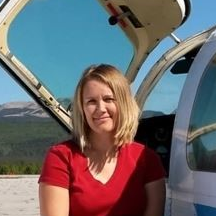LiDAR Measurements for Wildfire Applications
A special issue of Remote Sensing (ISSN 2072-4292). This special issue belongs to the section "Biogeosciences Remote Sensing".
Deadline for manuscript submissions: closed (31 August 2020) | Viewed by 5779
Special Issue Editors
Interests: time-series airborne lidar remote sensing; ecosystem change; boreal ecosystems; peatlands; permafrost thaw; biomass; carbon dioxide fluxes; hydro-meteorology Photo attached
Special Issues, Collections and Topics in MDPI journals
Special Issue Information
Dear Colleagues,
Wildfire is a natural process required for ecosystem regeneration and succession, but has also become a significant threat to the stability, health and economy of communities affected by wildfire. Severe wildfire also has the potential to alter the successional trajectories of ecosystems that are sensitive to changes in hydrology and energy balance. Over the last 20-30 years, wildfires have burned increasingly large areas and it is predicted that the area burned by wildfire will double over the next 20-30 years as a result of drying climates. Therefore, there is a need to better understand the complex interactions associated with areas that are susceptible to wildfire, fuel accumulation, burn severity, pollution, and environmental mechanisms that make some ecosystems more sensitive to wildfire than others.
Lidar is a useful remote sensing tool for understanding pre-fire ecosystem characteristics and post-fire changes associated with combustion because this technology measures the three-dimensional structure of vegetation and ground surface elevation. Data derivatives can then be linked to environmental drivers related to the spread of fire and burn severity, not easily observed using optical imagery.
We would like authors to submit one or more articles on the following topics. Review articles and new ideas in addition to what is mentioned below with regards to use of lidar for studying wildfire are also welcome:
- Community infrastructure, uncertainty and community susceptibility to wildfire based on proximal fuel sources
- Lidar for measuring infrastructure loss
- Wildfire mitigation strategies using lidar
- Classifying and characterising fuel for wildfires
- Lidar-algorithm development for wildfire
- Pre- and post-fire biomass loss, carbon losses, and/or burn severity
- New indices using lidar intensity and/or structural attributes
- Lidar application to validate lower resolution remote sensing burn severity products
- Post-fire succession, ecosystem change and transition
- Development of additional 3D indicators related to scorched surfaces
- Terrestrial/airborne/spaceborne lidar applications for wildfire
- Use of lidar for wildfire landscape risk analysis
- Combined lidar and field or in situ measurements for understanding and spatializing fire behaviour potential in forests
- Development of lidar/optical/radar data fusion methods for wildfire
- Use of lidar for identifying post-fire structures including fallen and standing coarse woody debris
- Lidar/wildfire applications across a wide range of ecosystems
Dr. Dan Thompson
Guest Editors
Manuscript Submission Information
Manuscripts should be submitted online at www.mdpi.com by registering and logging in to this website. Once you are registered, click here to go to the submission form. Manuscripts can be submitted until the deadline. All submissions that pass pre-check are peer-reviewed. Accepted papers will be published continuously in the journal (as soon as accepted) and will be listed together on the special issue website. Research articles, review articles as well as short communications are invited. For planned papers, a title and short abstract (about 100 words) can be sent to the Editorial Office for announcement on this website.
Submitted manuscripts should not have been published previously, nor be under consideration for publication elsewhere (except conference proceedings papers). All manuscripts are thoroughly refereed through a single-blind peer-review process. A guide for authors and other relevant information for submission of manuscripts is available on the Instructions for Authors page. Remote Sensing is an international peer-reviewed open access semimonthly journal published by MDPI.
Please visit the Instructions for Authors page before submitting a manuscript. The Article Processing Charge (APC) for publication in this open access journal is 2700 CHF (Swiss Francs). Submitted papers should be well formatted and use good English. Authors may use MDPI's English editing service prior to publication or during author revisions.
Keywords
- Lidar
- Wildfire
- Scaling
- Ecosystem
- Infrastructure
- Fuel
- Severity
- Biomass
- Vegetation structure






